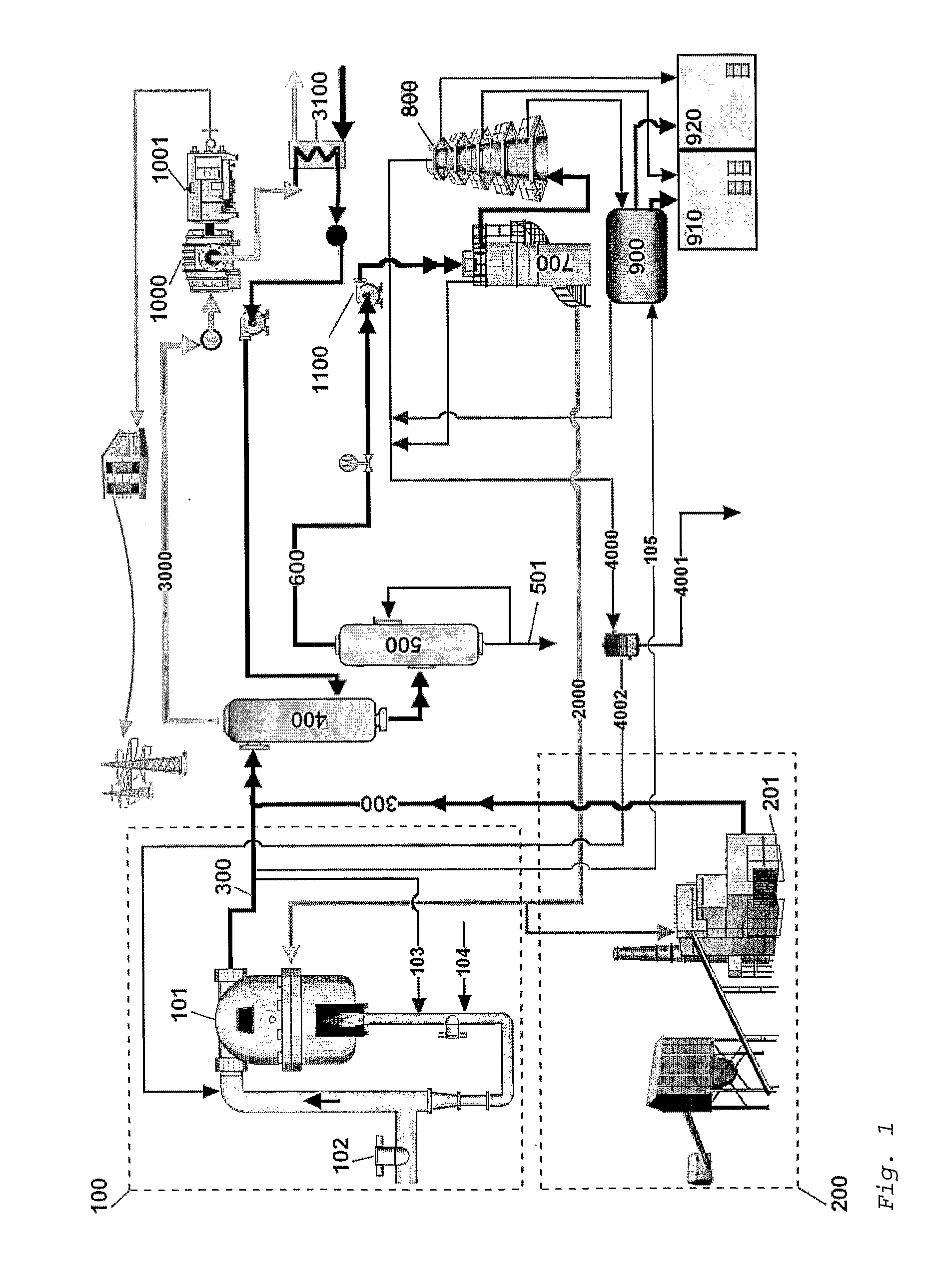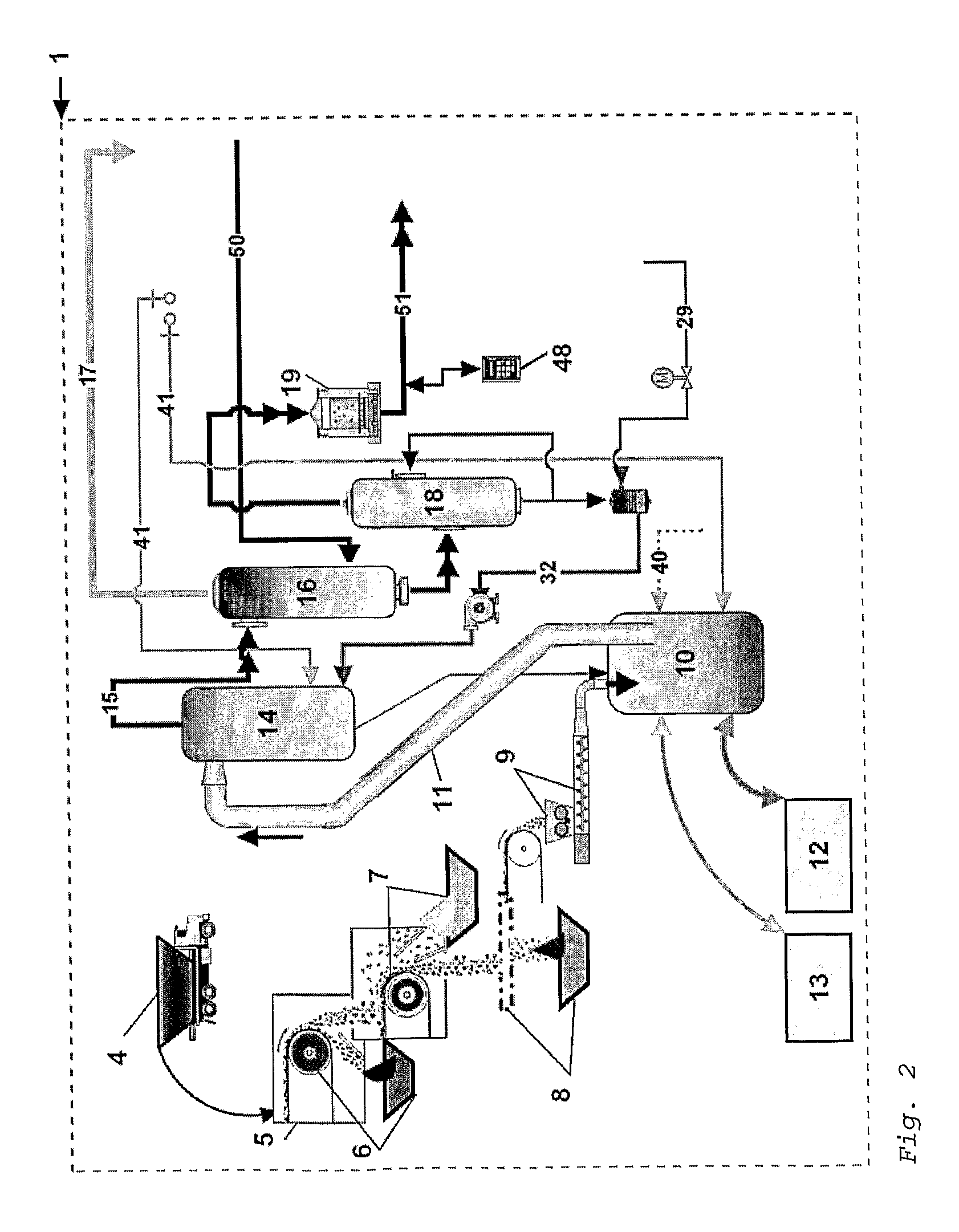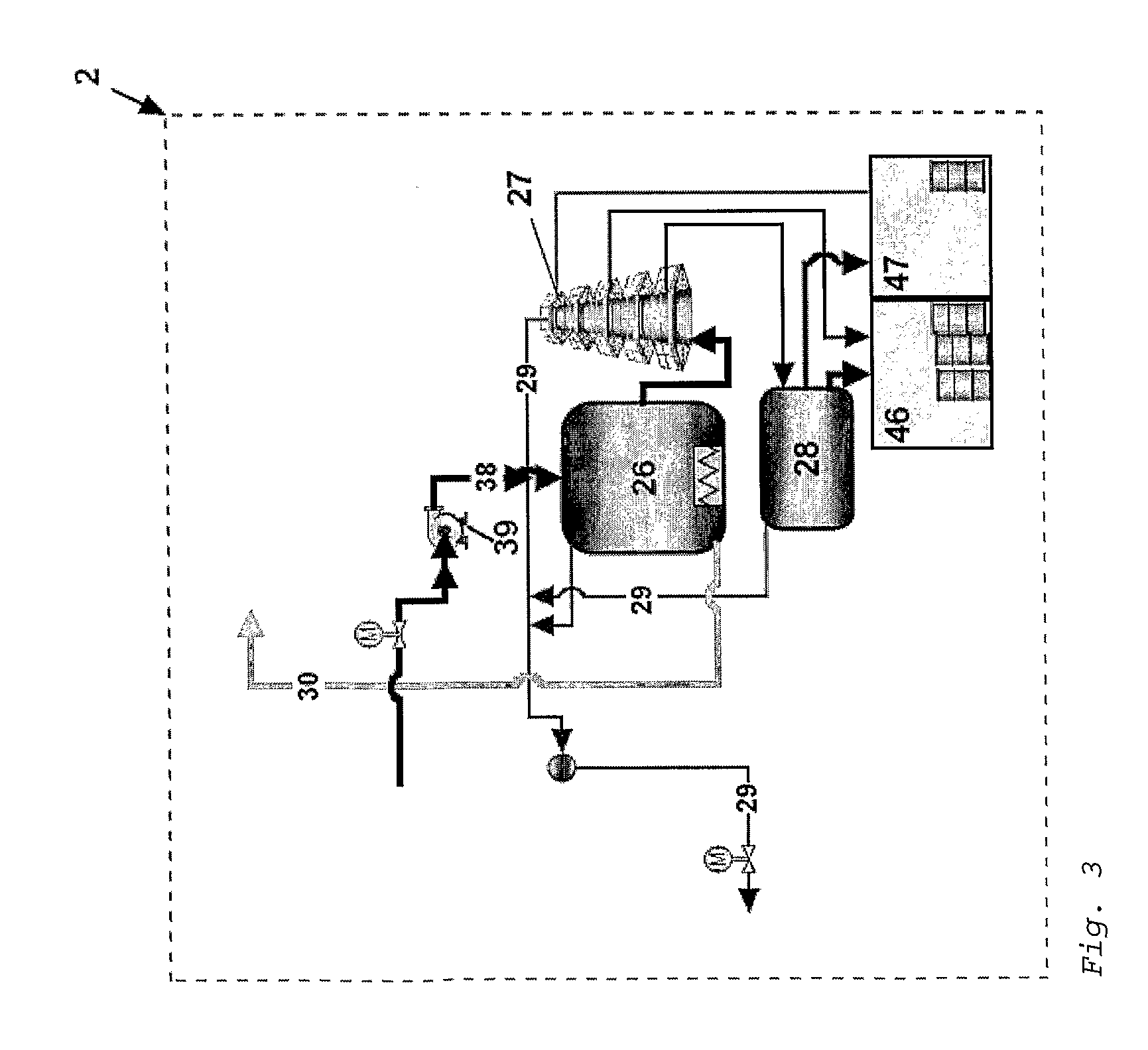Waste to liquid hydrocarbon refinery system
- Summary
- Abstract
- Description
- Claims
- Application Information
AI Technical Summary
Benefits of technology
Problems solved by technology
Method used
Image
Examples
case 2
er with the Original Feedstock SYNGAS, Steam is Injected as an Input Reactant to the FT Reactor:
[0073]In order to reduce the C lost in the synthesis of hydrocarbon at the FT reactor (26), Case 1- can be modified by adding external steam coming, for example, from the Steam Turbine (20) at subsystem 3. With an increase in the H2O content at the FT reactor, Le Chatelier principle will create an equilibrium bias at the WGS reaction towards the formation of more H2, increasing thus the H2 to CO ratio and minimising further losses of SYNGAS CO. Again, at WGS equilibrium the rate of consumption of CO+H2 is independent of the extent of the WGS reaction, since CO and H2 are on opposite sides of the WGS equation, but since more H2 than what comes in via the original SYNGAS is now available, the amount of Alkanes and Alkenes that can be generated is now also greater than in Case 1-. In such case, the expected hydrocarbon yield, represented by the C12H26 yield, is governed by the equation:
ssCO+...
PUM
 Login to View More
Login to View More Abstract
Description
Claims
Application Information
 Login to View More
Login to View More - R&D
- Intellectual Property
- Life Sciences
- Materials
- Tech Scout
- Unparalleled Data Quality
- Higher Quality Content
- 60% Fewer Hallucinations
Browse by: Latest US Patents, China's latest patents, Technical Efficacy Thesaurus, Application Domain, Technology Topic, Popular Technical Reports.
© 2025 PatSnap. All rights reserved.Legal|Privacy policy|Modern Slavery Act Transparency Statement|Sitemap|About US| Contact US: help@patsnap.com



